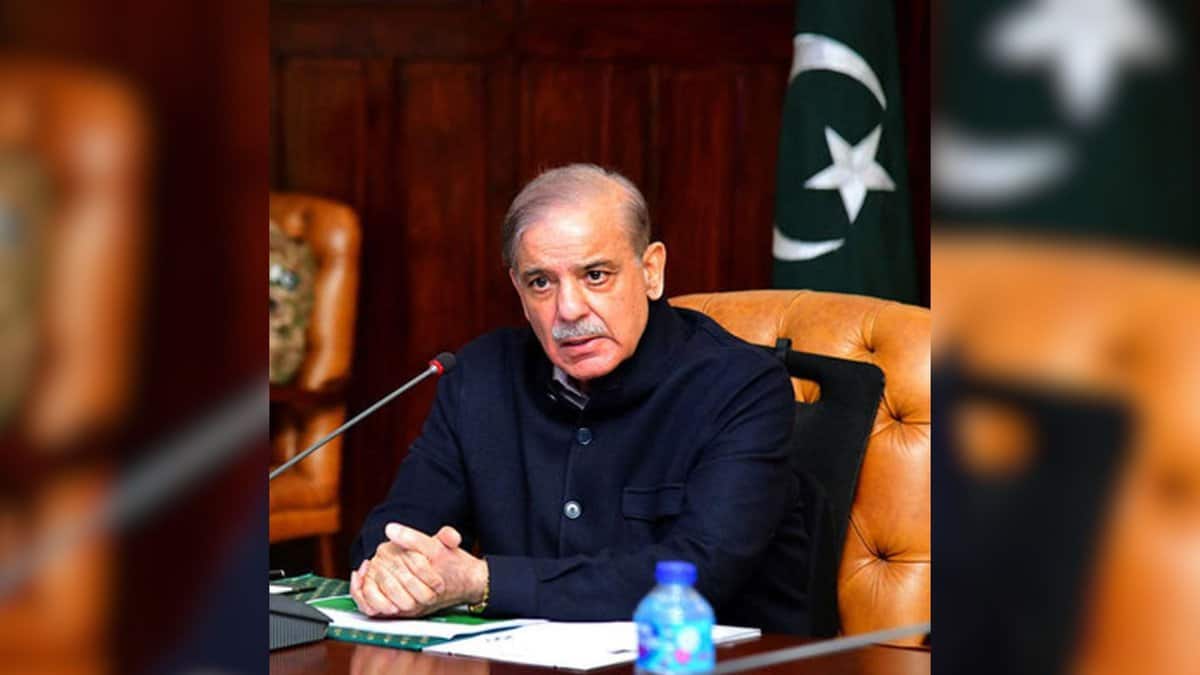SOURCE: IDRW.ORG


As the India-Pakistan conflict intensifies following India’s ‘Operation Sindoor’ on May 7, 2025, Indian naval assets equipped with the BrahMos supersonic cruise missile have reportedly moved closer to Karachi, Pakistan’s largest port city and economic hub. Sources indicate that the Indian Navy’s deployment, approximately 600 nautical miles from Mumbai, signals a strategic positioning to counter potential Pakistani aggression. Defence analysts warn that, should the current conflict escalate, any naval action involving BrahMos-armed vessels could result in “destruction beyond what one could imagine,” given the missile’s devastating capabilities. However, such an outcome remains contingent on further escalation, which both nations are under international pressure to avoid.
The repositioning of Indian naval assets follows a series of aggressive exchanges sparked by India’s retaliatory airstrikes targeting nine terrorist sites in Pakistan and Pakistan-administered Kashmir, in response to the April 22, 2025, Pahalgam terror attack that killed 26 civilians.
Continue readingSOURCE: IDRW.ORG


Early Thursday morning, May 8, 2025, residents of Jathuwal village in Majitha, near Amritsar, discovered debris near a wall, prompting a swift response from local authorities who confirmed its recovery. The find, identified by the Indian Defence Research Wing (idrw.org) as possible remnants of a 48N6 missile from India’s S-400 air defence system, idrw.org had reported that across Amritsar in the early hours of the same day, interceptor missiles were used. Authorities have reported no loss of life or property damage, but the incident has fueled speculation amid heightened India-Pakistan tensions following ‘Operation Sindoor.’
The debris, described as a partially burnt airframe in length, exhibited signs of a blast burnout, suggesting the missile detonated near its intended target. The 48N6 missile, a key component of the Russian-supplied S-400 Triumf system, is designed to intercept aircraft, drones, and cruise missiles at ranges up to 250 km and altitudes of 60 km. India has deployed three S-400 squadrons in northwest and eastern sectors to counter threats from Pakistan and China, with Amritsar’s proximity to the border making it a strategic location for such systems.
Continue readingSOURCE: AFI


On unverified reports surfaced claiming that an Indian Air Force (IAF) IAI Harop loitering munition (LM) targeted a Chinese-made HQ-16 (LY-80) surface-to-air missile (SAM) battery operated by Pakistan’s 4th Air Defence Regiment in Walton, Lahore. The alleged attack reportedly injured four Pakistani Army personnel and damaged at least one truck associated with the missile system, escalating tensions between the two nuclear-armed neighbors.
Unconfirmed Pakistani sources, the strike occurred in a military area in Walton, a busy locality in Lahore, close to the border with India. The HQ-16 battery, a key component of Pakistan’s air defense network, was reportedly the primary target. Images circulating online show a damaged military truck that seems to be Mobile Command Post of the HQ-16 battery, with some reports suggesting an air defense radar may have been destroyed. While it has been confirmed that four soldiers that were part of the crew operating the SAM system were injured, though their conditions as been reported to be non-critical.
Continue readingSOURCE: AFI


New Delhi, India – In a stunning display of technological prowess and tactical precision, India’s Operation Sindoor, launched on May 7, 2025, successfully targeted nine terrorist camps in Pakistan and Pakistan-occupied Kashmir (PoK) using advanced loitering munitions, including the Bengaluru-manufactured SkyStriker suicide drones and the DRDO-developed Low-Cost Miniature Swarm Drone or Loitering Munition System (LMS). The operation, a retaliation for the April 22, 2025, Pahalgam terror attack that killed 26 civilians, saw Indian unmanned aerial vehicles (UAVs) evade Pakistan’s air defence systems, delivering clear live video feeds of all nine strikes while maintaining two-way communications, according to sources familiar with the operation.
The Indian Armed Forces deployed SkyStriker suicide drones, produced through a joint venture between Bengaluru-based Alpha Design and Israel’s Elbit Security Systems. Procured by the Indian Army in 2021 following the 2019 Balakot airstrikes, these loitering munitions boast a 100 km range and carry a 5-10 kg warhead, enabling high-precision strikes on designated targets. The SkyStriker, described by Elbit as a cost-effective unmanned aerial system (UAS) that “flies like a drone and strikes like a missile,” was instrumental in silently targeting terror infrastructure, including camps operated by Lashkar-e-Taiba (LeT), Jaish-e-Mohammed (JeM), and Hizbul Mujahideen.
Continue readingSOURCE: AFI


The escalating conflict between India and Pakistan has taken a deadly turn, with reports emerging of over 150 casualties inside Pakistan following India’s ‘Operation Sindoor,’ a series of missile strikes targeting terrorist infrastructure on May 7, 2025. However, Pakistan’s military, through its Inter-Services Public Relations (ISPR), has significantly downgraded the toll, officially reporting 31 civilian deaths and 57 injuries across six locations struck by Indian forces. The discrepancy in casualty figures, combined with conflicting narratives, has intensified the ongoing crisis between the two nuclear-armed neighbors, raising fears of further escalation.
The Indian Air Force (IAF) launched ‘Operation Sindoor’ in retaliation for the April 22, 2025, Pahalgam terror attack, which killed 26 civilians, mostly tourists, in Indian-administered Kashmir. India’s Defence Ministry stated that the operation targeted nine sites—four in Pakistan’s Punjab province (Ahmedpur East, Muridke, Sialkot, Shakargarh) and five in Pakistan-administered Kashmir (Muzaffarabad, Kotli, Bagh)—aimed at eliminating infrastructure linked to Jaish-e-Mohammed (JeM) and Lashkar-e-Taiba (LeT). The strikes, involving 80-90 aircraft and advanced weaponry like the BrahMos air-launched missile and SCALP cruise missiles, were described as “focused, measured, and non-escalatory,” with no Pakistani military facilities targeted.
Continue readingSOURCE: AFI


Reports emerged of debris believed to be from a Pakistani LY-80 (HQ-16) surface-to-air missile (SAM) system discovered on the outskirts of Gujranwala, a major city in Punjab province. The wreckage, found in a rural area, has sparked speculation about the cause, ranging from a possible malfunction to an unscheduled test or accident.
Local residents reportedly stumbled upon the debris in a field near [specific location, if known, or general area]. Images circulating on social media platforms, including posts on X, show fragmented metallic components, some bearing markings consistent with military hardware. Preliminary assessments by experts suggest the wreckage aligns with components of the LY-80, a Chinese-designed medium-range SAM system operated by the Pakistan Air Force.
Continue readingSOURCE: AFI


A photo circulated by several Pakistani social media handles, claiming to show the rear-stabilizer of an Indian Rafale fighter jet allegedly downed by Pakistan during India’s ‘Operation Sindoor’ on May 7, 2025, has been exposed as a fabrication. The image, widely shared on platforms like X, was presented as evidence of Pakistan’s military success in countering Indian airstrikes. However, analysis by multiple sources, including AI-based image detection tools, has confirmed the photo as a human-generated fake, highlighting the role of misinformation in the escalating India-Pakistan conflict.
The controversy emerged amid Pakistan’s claims that its air defence systems shot down five Indian aircraft, including three Rafale jets, one Su-30MKI, one MiG-29, and an IAI Heron drone, during India’s retaliatory operation targeting nine terrorist sites in Pakistan and Pakistan-administered Kashmir. ‘Operation Sindoor,’ executed in response to the April 22, 2025, Pahalgam terror attack that killed 26 civilians, involved 80-90 Indian aircraft deploying BrahMos and SCALP cruise missiles.
Continue readingSOURCE: KSSL

Kalyani Strategic Systems Ltd. (KSSL) is a wholly-owned subsidiary of Bharat Forge Limited, set up as a flagship company to drive defence business initiatives, under the aegis of the Kalyani Group. Over the past couple of decades, KSSL has built robust capabilities in design and production of varied artillery platforms. With products ranging from short range to long range, mounted and towed artillery gun platforms, KSSL has carved a niche for itself as an Indian defence manufacturer exporting ‘Made in India’ artillery platforms and defence systems to friendly foreign countries.
Encouraged by the strengthening Greece – India bilateral relationship, elevated Strategic Partnership with special focus on defence cooperation between our two nations, KSSL is showcasing its product range at DEFEA-2025 being held from 6th – 8th May 2025 in Athens, Greece.
Continue readingSOURCE: PTI


Indian Armed forces foiled attempts by the Pakistani military to engage a number of military targets in Northern and Western India using drones and missiles last night and destroyed a Pakistani air defence system in Lahore, officials said on Thursday.
The Pakistani military attempted to target Awantipura, Srinagar, Jammu, Pathankot, Amritsar, Kapurthala, Jalandhar, Ludhiana, Adampur, Bhatinda, Chandigarh, Nal, Phalodi, Uttarlai, and Bhuj, they said.
These were neutralised by the Integrated Counter Unmanned Aircraft System (Grid and Air Defence systems), the defence ministry said.
SOURCE: PTI


Defence Minister Rajnath Singh on Thursday told an all-party meeting that at least 100 terrorists were killed in the Indian strikes on terror sites in Pakistan and Pakistan-occupied Kashmir under ‘Operation Sindoor’, sources said.
The government also mentioned that Operation Sindoor is still underway, making it difficult to provide an exact number. Additionally, the government said that India will not take any action on its part until Pakistan carries out any provocative action.
Continue readingSOURCE: IANS


Flustered by the Indian armed forces’ attack on terror bases, Pakistan Prime Minister Shehbaz Sharif has vowed retaliation. India’s targeted military strikes under Operation Sindoor hit nine high-value terror infrastructure sites across Pakistan and Pakistan-occupied Kashmir (PoK), including the hideouts of top terror masterminds Maulana Masood Azhar and Hafiz Saeed.
Addressing the nation following India’s unprecedented action against terrorism, Sharif on Wednesday asserted Pakistan’s intent to respond forcefully.
Continue readingSOURCE: IANS

Tech billionaire Elon Musk’s affordable internet service Starlink has come closer to its India launch, after it received a Letter of Intent (LoI) from the Department of Telecom (DoT). The initial approval was granted after Starlink agreed to comply with the new national security guidelines for satcom operators.
The Department had announced 29 additional requirements, including mandatory interception and monitoring mechanisms, use of local data centres, location tracking for mobile user terminals, localisation mandates, among others, for existing and potential satcom licensees.
Continue readingSOURCE: PTI


People in some border villages of Ferozepur district in Punjab have begun moving to safer areas amid soaring tensions between India and Pakistan. Other villagers near the International Border (IB) with Pakistan in Amritsar and Tarn Taran border districts, however, exuded a sense of calmness with people going about with routine work.
Indian armed forces early Wednesday carried out missile strikes on nine terror targets in Pakistan and Pakistan-occupied Kashmir (PoK), including the Jaish-e-Mohammed stronghold of Bahawalpur and Lashkar-e-Taiba’s base in Muridke.
Continue readingSOURCE: PTI

Lance Naik Dinesh Kumar of the 5-Field Regiment, who was among the 13 persons killed in the Pakistani shelling along the Line of Control (LoC) in Poonch sector of Jammu and Kashmir, hailed from Haryana and has two younger brothers who are also serving in the armed forces.
Dinesh was 32 years old and came from a village in the Palwal district. According to his father, Daya Chand, he joined the Army in 2014 and is survived by his wife and two children, both minors.
Continue readingSOURCE: UNI


Police and Sashastra Seema Bal (SSB) have arrested four Chinese citizens from the border areas adjoining Nepal in Raxaul. All four were trying to illegally enter India without a visa. This incident happened at a time when there is a high alert regarding security in the area.
In view of ‘Operation Sindoor’ in East Champaran district, high alert is already in place on the India-Nepal border. Meanwhile, four Chinese citizens have been arrested in a joint operation by SSB and local police at Raxaul border. All the accused were trying to enter the Indian border illegally.
Continue reading